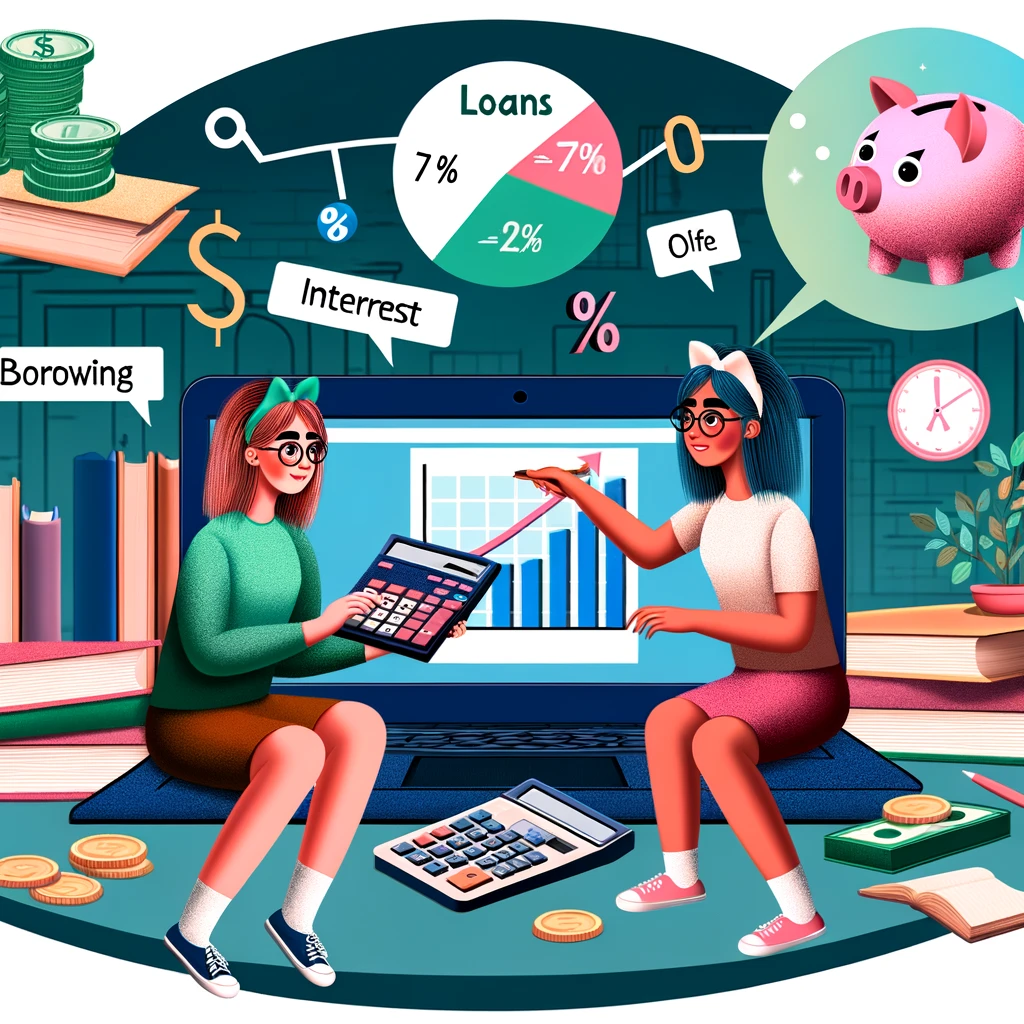
So, you want to borrow some money? Maybe you’re eyeing a new bike, a gaming console, or you’re looking at ways to fund your dream project. Before you dive in, there’s something you should know: borrowing money isn’t free. That’s right, when you borrow money, you end up paying back more than you took out. This extra cost comes in the form of interest. Let’s break down what this really means and how you can make smart decisions about loans and interest.
1. What’s a Loan?
A loan is when you borrow a specific amount of money from a lender (like a bank, online lender, or even a family member) with a promise to pay it back over time. This could be for anything – from buying a laptop to paying for college.
2. And Interest? What’s That?
Interest is the price you pay for using someone else’s money. It’s usually a percentage of the amount you borrow and it’s how lenders make money. Think of it as a rental fee for borrowing cash. The longer you take to pay back the loan, the more interest you’ll pay.
3. Types of Interest
- Fixed Interest: The rate stays the same throughout the life of the loan. It’s predictable, but if interest rates drop, you’ll still be stuck paying the higher rate. This is important to remember for long-term loans. For short-term loans (a few months), it is less important.
- Variable Interest: The rate can change based on the economy or market conditions. It might start lower than a fixed rate, but it can increase over time.
4. The Impact of Interest
Let’s say you borrow $500 for a new bike, with a 10% annual interest rate, and you plan to pay it back over a year. By the end of the year, you won’t just owe $500; you’ll owe $550 because of interest. That’s the cost of borrowing money.
5. Tips for Borrowing Wisely
- Understand the Terms: Know the interest rate, how it’s calculated, and when you need to pay back the loan.
- Shop Around: Different lenders offer different rates. Look for the best deal.
- Only Borrow What You Need: It might be tempting to take more, but remember, you’re paying interest on every dollar borrowed.
- Plan Your Repayments: Figure out how you’ll pay back the loan before you take it. This might mean setting aside money from your allowance or job.
- Consider the Future: Ask yourself if what you’re borrowing for is worth the extra cost of interest.
6. The Bottom Line
Borrowing money can be a tool to help you achieve your goals, but it comes with a cost. Understanding loans and interest is crucial to making informed financial decisions. Always consider the long-term implications of taking out a loan and work towards minimizing the amount of interest you’ll pay. Remember, the best loan is the one you’ve thought through and can confidently pay back on time.
